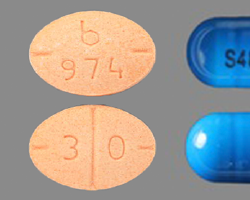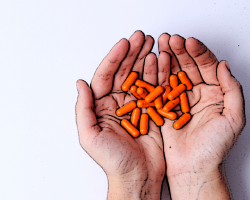Stimulant Addiction Comes Roaring Back onto the National Stage

Anyone who’s been watching the problems of drug abuse and addiction know they never fully go away, they simply mutate from one form to another. This is the classic situation of “whack-a-mole”—the carnival game where the player attempts to whack a mechanical animal with a big club as soon as he pops his head up. Of course, when that mole retreats, another one shows up elsewhere.
In much the same way, when national resources are focused on overcoming one specific drug or addiction problem, you can be sure that the situation being fought will soon mutate into something different. The specific problem being fought will change its characteristics—other problems will crop up, change, disappear and reappear—and new drugs will enter the market.
It’s almost like drug manufacturers and traffickers look at where the major drug-fighting efforts are directed so they can ramp up production and distribution of some other drug that’s not getting so much opposition. I guess if I were a soulless drug lord, that would sound like good business to me.
In the last couple of years, as government and grass-roots attention has been fixed on solving the problem with opioids, the abuse of and addiction to stimulants has been a quietly growing and majorly overlooked problem. It was only a matter of time.
The Rising Phenomenon of Stimulant Abuse and Addiction

First, let’s look at which drugs we are talking about. Stimulants include drugs such as:
- Cocaine
- Amphetamine
- Methamphetamine
- Prescription stimulants such as Adderall and Ritalin
- Benzedrine
Abuse or misuse (referring specifically to prescription drugs) in the United States reaches back to the early 20th Century when benzedrine inhalers were sold over the counter. These products were touted as good remedies for nasal and bronchial congestion. But some people found they enjoyed the alertness and energy they received from using more of this drug than recommended.
Benzedrine began being heavily marketed as a solution for depression in the 1940s and also began to be distributed to U.S. and foreign soldiers to help them stay alert. After abuse problems surfaced, Benzedrine, which is just an oily form of amphetamine, became a prescription-only drug in 1959. By the 1960s, various forms of amphetamine were being widely prescribed for depression or weight loss, mostly by family doctors.
Following this surge in prescribing, illicit manufacturing of stimulants began to show up on the radar, appearing first on the West Coast. Was this again just a good business decision by drug traffickers because they saw that more people were using the prescription form of this drug?
As prescriptions surged and illicit stimulants began pouring into the country, another prescription stimulant began to gain popularity. These drugs were given names like Ritalin, Adderall, Concerta, Vyvanse and Strattera. Ritalin and other formulas contain a drug called methylphenidate. Adderall and some others are a mix of two forms of amphetamine.
This graph shows the rapid rise in prescriptions for both amphetamine and methylphenidate starting in the late 1990s. The numbers on the left refer to the number of doses of each type of drug.

(Source: www.ncbi.nlm.nih.gov)
Opioids Suddenly Take Center Stage
At the same time these prescription stimulants were being prescribed in increasing amounts, opioids were also being aggressively marketed to physicians. Through seminars, conferences in lush locales, ads in trade publications and a rigorously trained army of pharmaceutical reps, doctors were cajoled, convinced and rewarded for prescribing OxyContin and other opioids. Millions of people who might have found pain relief with something less addictive took the pills and became dependent on them. Many prescribing doctors began to worry about being prosecuted for addicting their patients and cut them off cold. Some of these patients went to the illicit market and bought heroin or counterfeit pills. Way too many of them died as a result.
Catastrophic levels of overdose deaths caught the attention of legislators, government agencies and grassroots groups. Year by year, more and more attention has been focused on coming up with a solution to the opioid epidemic that would save tens of thousands of lives each year.
But as these conversations about saving lives from opioids continued, numbers related to stimulants were creeping up.
Comparing numbers from the National Survey on Drug Use and Health will show how much the use or misuse of these stimulants has been climbing.
Methamphetamine Users:
- In 2010, there were an estimated 353,000 meth users.
- By 2013, this number was up to 595,000.
- By 2017, it was up to 774,000.
People misusing prescription stimulants:
- In 2011, there were 970,000 people misusing their own prescribed stimulants or using drugs prescribed to someone else. That means they were either taking them without a prescription, taking more of them than prescribed, taking them more often or just taking them to get high.
- By 2013, this number had risen to 1.4 million.
- By 2017, it was 1.84 million.
Even cocaine numbers have been rising again.
- In 2013 there were 1.5 current million users of cocaine (which means they have used the drug in the last 30 days). These numbers were similar to the statistics from 2009 to 2012.
- In 2016, this number rose to 1.9 million.
- In 2017, the number rose again to 2.2 million.
Can Stimulants Kill Like Opioids Do?

They can and they do. All stimulants place an intense strain on the heart and vascular system. The heart beats faster, while at the same time, arteries are constricted. The result can be devastating. Heart attacks, strokes and cardiac arrests are common. Another result of stimulant abuse is aortic dissection—in other words, the major artery leading away from the heart shreds from the stress.
Since use has increased, it’s understandable that stimulant-related deaths have also increased. The Centers for Disease Control and Prevention notes that between 2016 and 2017, the number of deaths from cocaine or other stimulants increased by approximately one-third.
According to one report, the death toll from methamphetamine in Texas exceeded that of heroin. In 2017, 813 people died from the effects of methamphetamine while only 591 died as a result of heroin use.
The mental toll of these stimulants is also heavy. Use of these drugs routinely results in severe effects such as hallucinations and paranoia and very heavy use can result in psychosis.
If we needed any proof about the growing market for methamphetamine, a February 2019 drug seizure in Los Angeles would be all we’d need to convince us. Border Patrol agents found that a shipment of speakers in a large container was concealing 1.7 tons of this drug. Street value? $1.29 billion.
All this information speaks to the importance of not focusing too closely on one particular type of drug problem. If we focus on opioids, we may miss the rise of stimulant abuse. If we are obsessed with marijuana, we are sure to overlook the 23 million people putting themselves at risk by binge drinking, or the 14.5 million people struggling with alcohol dependence or abuse.
While it’s often vital to launch emergency actions to save lives, the importance of educating both youth and adults on the benefits of avoiding excessive alcohol use, any illicit drug use or any prescription drug misuse should never be forgotten. Otherwise, we could climb out of one frying pan into a fire that’s been heating up while we were not watching.


 ®
®